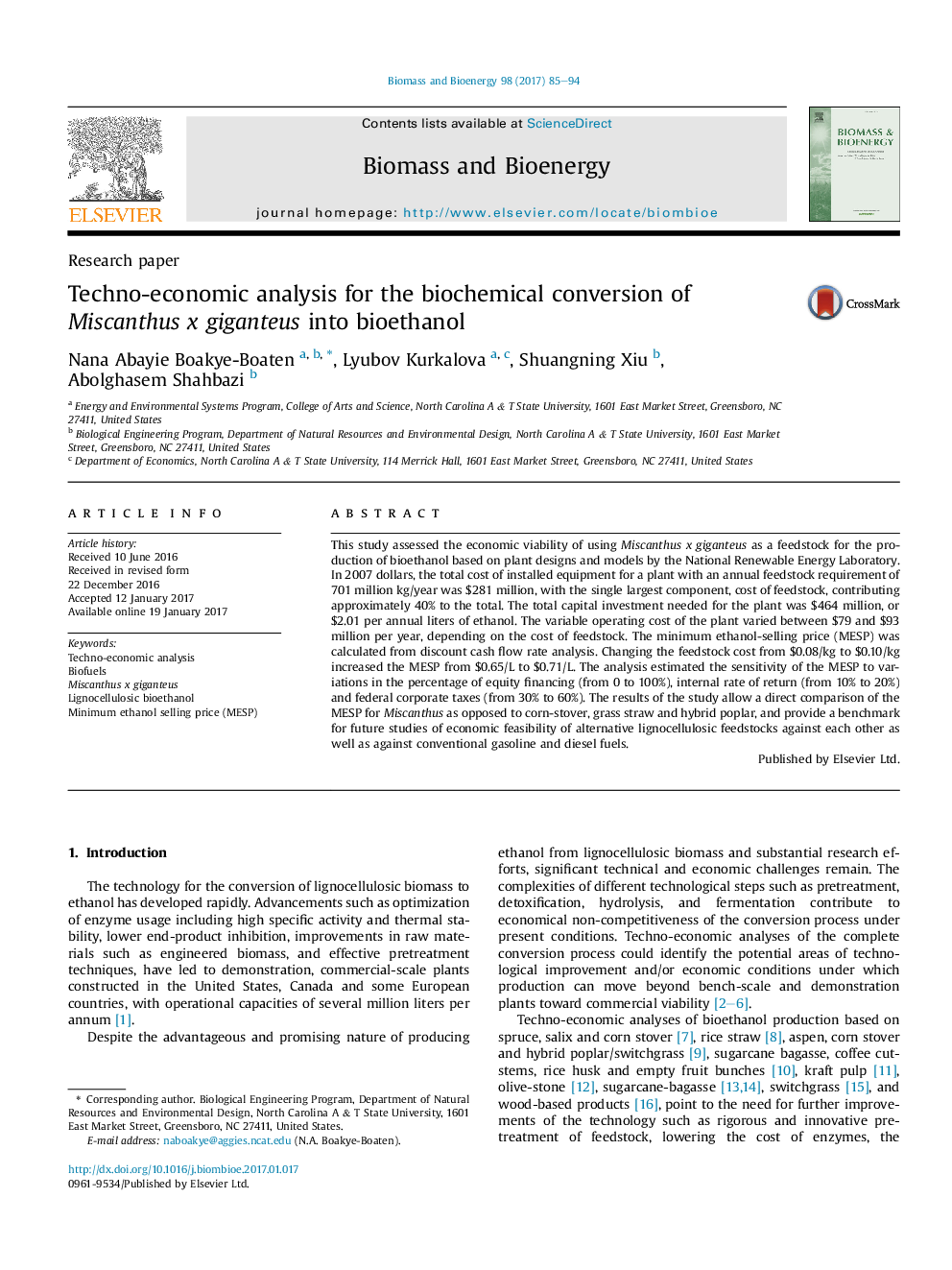| Article ID | Journal | Published Year | Pages | File Type |
|---|---|---|---|---|
| 4996305 | Biomass and Bioenergy | 2017 | 10 Pages |
•Techno-economic analysis was conducted for bioethanol from Miscanthus x giganteus.•Minimum ethanol selling prices were estimated to range between $0.65/L and $0.71/L.•2007 dollars used as baseline for analyses conducted.•Feedstock price and handling prominently affected minimum ethanol selling price.•Analyses were based on NREL models.
This study assessed the economic viability of using Miscanthus x giganteus as a feedstock for the production of bioethanol based on plant designs and models by the National Renewable Energy Laboratory. In 2007 dollars, the total cost of installed equipment for a plant with an annual feedstock requirement of 701 million kg/year was $281 million, with the single largest component, cost of feedstock, contributing approximately 40% to the total. The total capital investment needed for the plant was $464 million, or $2.01 per annual liters of ethanol. The variable operating cost of the plant varied between $79 and $93 million per year, depending on the cost of feedstock. The minimum ethanol-selling price (MESP) was calculated from discount cash flow rate analysis. Changing the feedstock cost from $0.08/kg to $0.10/kg increased the MESP from $0.65/L to $0.71/L. The analysis estimated the sensitivity of the MESP to variations in the percentage of equity financing (from 0 to 100%), internal rate of return (from 10% to 20%) and federal corporate taxes (from 30% to 60%). The results of the study allow a direct comparison of the MESP for Miscanthus as opposed to corn-stover, grass straw and hybrid poplar, and provide a benchmark for future studies of economic feasibility of alternative lignocellulosic feedstocks against each other as well as against conventional gasoline and diesel fuels.
